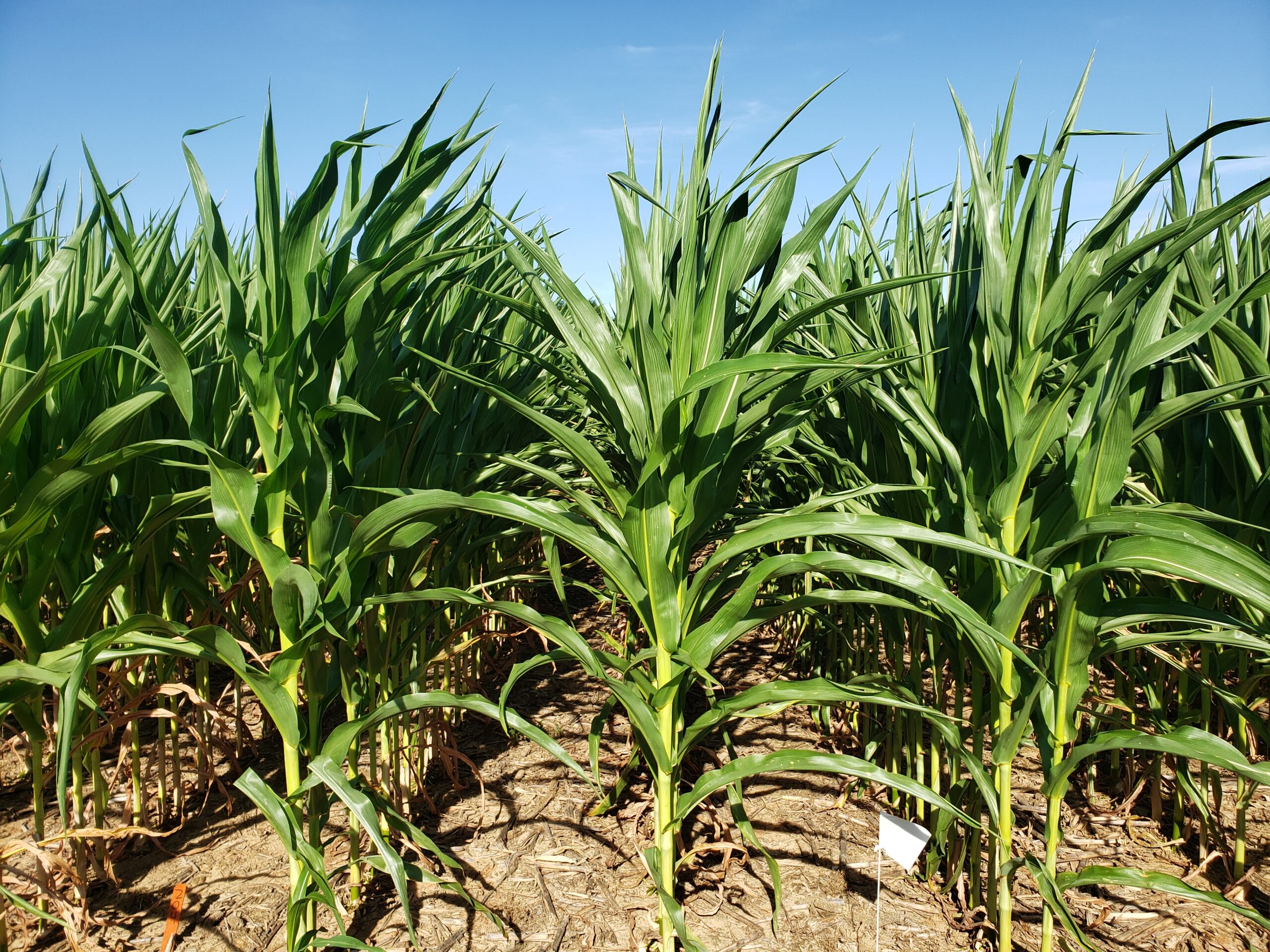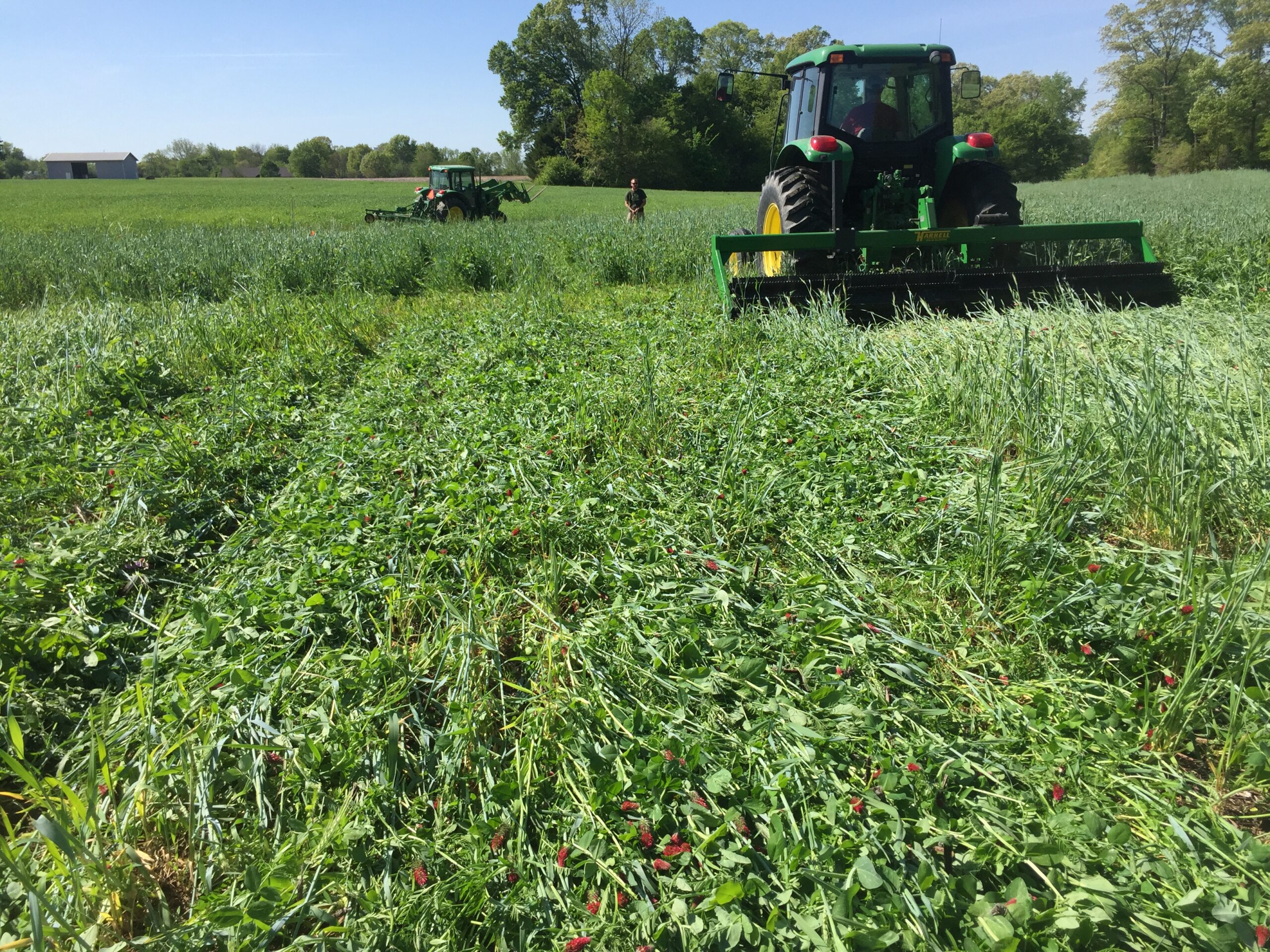| As we approach the end of July, much of our corn and some of our soybean acres are in the latter portion of their respective reproductive growth stages. As we progress toward physiological maturity, lets revisit irrigation termination decisions for these two crops. |
Category Archives: Soil
Phosphorus Deficiency in Corn and Soybean
| Week 2: Phosphorus |
| In the second installment in our series on nutrient deficiencies in corn and soybean, this week we take quick look at phosphorus: symptomology, sources, and common causes. |
Corn and Soybean Tolerance to Flooding and Submergence
Excessive rainfall over the weekend (5/12 and 5/13) in the North Western river counties has resulted in several calls this week concerning flooding and standing water in corn and to a lesser extent in soybean. Crop response will depend on the length of time the crop remains submerged and varies between corn and soybean. With rain still in the forecast for the next few days, here are a few agronomic considerations to be aware of. Continue reading
Nutrient Deficiency – Nitrogen
This is the first of several installments dealing with commonly observed nutrient deficiencies in corn and soybean. Each week, a new macro or micro nutrient will be posted and discussed. The main objective of this series will be to discuss for each nutrient: (1) visual symptomology of deficiency, (2) plant and leaf tissue deficiency levels, (3) common causes of deficiency, and (4) in-season corrective measures. Continue reading
Early Planting and Growing Degree Days
As warmer temperatures creep into the forecast each spring, farmers and researchers alike begin to consider just how soon to pull the trigger and put seed into the ground. While these early planting dates may fall slightly outside of what is considered nominal for corn and soybean, certain situations may still provide growers a window of opportunity for early planting. Continue reading
In-season Plant Testing Interpretation During Dry Soil Conditions
 In season plant tissue testing helps producers monitor plant nutrition and can be useful in diagnosing nutrient deficiency. Detecting deficiencies early can allow the corrective or preventive action that will minimize yield effects from deficiency during the growing season. Nutrient concentrations vary greatly with plant growth stages and the part of the plant that is sampled so specific sampling guidelines and interpretation have been instituted to prevent false diagnosis. Continue reading
In season plant tissue testing helps producers monitor plant nutrition and can be useful in diagnosing nutrient deficiency. Detecting deficiencies early can allow the corrective or preventive action that will minimize yield effects from deficiency during the growing season. Nutrient concentrations vary greatly with plant growth stages and the part of the plant that is sampled so specific sampling guidelines and interpretation have been instituted to prevent false diagnosis. Continue reading
Integrating Cover Crops in Nitrogen Management
 Cover crops can supply nitrogen (N) to the soil for the subsequent cash crops and this nitrogen credit may be successfully integrated into N management. The challenging question is how much of the N supplied by cover crops is available for the next cash crop. Unfortunately, there is not a simple answer to this question since several factors influence the N availability from cover crops. There are two primary considerations if the goal of planting cover crops is to contribute N to the soil: the proportion of species in cover stand and the timing of cover crop termination.
Cover crops can supply nitrogen (N) to the soil for the subsequent cash crops and this nitrogen credit may be successfully integrated into N management. The challenging question is how much of the N supplied by cover crops is available for the next cash crop. Unfortunately, there is not a simple answer to this question since several factors influence the N availability from cover crops. There are two primary considerations if the goal of planting cover crops is to contribute N to the soil: the proportion of species in cover stand and the timing of cover crop termination.
The proportion of species in the established cover stand is important because different species have different effects on N. Depending on the species of cover crop planted, soil N may be removed or supplied to the soil. Grass cover crops (e.g. cereal rye, annual rye, wheat, oats), which are referred to as “scavengers” take up nitrates from either residual N fertilizers or organic matter decomposition. So, grasses do not contribute a whole lot to the soil N since not all of the scavenged N is available for the next growing season. An established cover stand comprised of all or mostly grasses will not provide any significant N benefit. Hence, the recommended N rate for the cash crop should not be reduced. In contrast, legumes (e.g. clover, winter pea, hairy vetch) supply additional soil N through biological N fixation. A well-established legume cover crop stand would supply sufficient N to warrant reducing the recommended N rate. UT currently recommends a 60 to 80 lb N credit for a well established legume cover crop that has reached early bloom.
Generally, most growers plant multispecies of cover crops with less than 50% of biomass being a legume. Since legumes supply N, a good percentage of legume in cover stands is required to maximize plant available N for the next cash crop. A study in TN has shown that 30% legume biomass in cover stands can supply up to 43 pounds of N per acre when terminated late. It is critical to evaluate a stand of mixed species cover crops to determine actual legume proportion if some N credit is desired.
The second consideration is the timing of cover crop termination. There is a thin line between growing cover for extended periods to maximize plant available nitrogen (PAN) and yield loss of the cash crop. Generally, if the goal is to maximize PAN from a well-established legume stand, late termination may be a preferred choice. It is worth pointing out that late termination would result in delayed planting and increase the potential for yield loss of cash crops such as corn. If the legume is terminated early, those plants are smaller and have less time to fix N which can be released back into the soil. In contrast, well-established grass stands must be terminated early, especially if growing a cash crop with high N demand (e.g. corn). This strategy will not necessarily supply N but, rather prevent N from being tied up in the soil.
In summary, unique challenges presented by rising N fertilizer costs may present opportunities to rely on cover crops to meet some N need for the next cash crop. However, to integrate cover crops in N management, the cover crop should consist of at least 30% of established legume in the cover crop stand and should be terminated at early bloom. Currently, UT only recommends a N credit of 60-80 pounds per acre of plant available N following a single species well-established legume cover crop that has reached early bloom.
The New UTcrops.com !!!
 If you haven’t noticed, our UTcrops.com website has gotten a facelift. You may not recognize it when you first visit us at https://utcrops.com/. However, it’s organized similarly to the old version. I’m sure there are a few bugs that need to be fixed, but take a look! This site gives you ready access to essentially all UT resources related to row crop production.
If you haven’t noticed, our UTcrops.com website has gotten a facelift. You may not recognize it when you first visit us at https://utcrops.com/. However, it’s organized similarly to the old version. I’m sure there are a few bugs that need to be fixed, but take a look! This site gives you ready access to essentially all UT resources related to row crop production.

